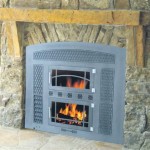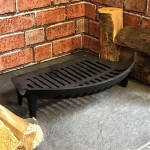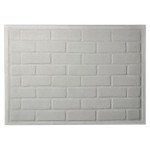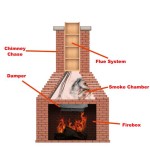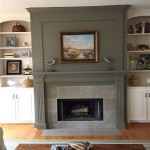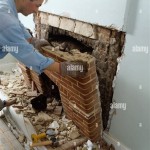How To Tile a Gas Fireplace Surround
Tiling a gas fireplace surround can significantly enhance the aesthetic appeal of a living space. It allows for personalization and creates a focal point within a room. This article provides a step-by-step guide on how to successfully tile a gas fireplace surround, ensuring a durable and visually appealing finish. Prior to commencing any work, it is imperative to consult the gas fireplace manufacturer’s instructions and local building codes to ensure compliance and safety.
Preparation and Safety Considerations
Before beginning the tiling process, thorough preparation is crucial. This involves assessing the existing fireplace surround, gathering necessary tools and materials, and prioritizing safety measures. A clean and properly prepped surface will greatly contribute to the success and longevity of the tiled surround.
The first step is a comprehensive inspection of the existing fireplace surround. Determine the type of material currently in place, noting its condition. Look for any signs of damage, such as cracks or loose areas. If the existing surround is uneven or unstable, it will need to be addressed before tiling can begin. A solid and even substrate is essential for proper tile adhesion.
Next, gather all the necessary tools and materials. These typically include: tiles (chosen according to personal preference and design scheme), tile adhesive (selected based on the type of tile and substrate), grout, a notched trowel, a tile cutter (wet saw or manual cutter), a level, a measuring tape, a pencil, safety glasses, gloves, sponges, buckets, and a grout float. Having all these items readily available will streamline the tiling process and prevent delays.
Safety is paramount when working with tiling materials and power tools. Always wear safety glasses to protect the eyes from dust and debris. Use gloves to prevent skin irritation from the tile adhesive and grout. If using a wet saw, ensure it is properly grounded and follow the manufacturer’s safety instructions strictly. Adequate ventilation is also important, especially when working with adhesives and grouts that may release fumes. Ensure the gas fireplace is turned off and the gas supply is disconnected before commencing work. Consult a qualified gas technician if unsure how to safely disconnect the gas supply.
Surface preparation is the next critical step. Remove any existing paint, wallpaper, or loose debris from the fireplace surround. Clean the surface thoroughly with a degreaser to remove any grease or grime. If the existing surface is porous, apply a primer to improve tile adhesion. For particularly smooth surfaces, consider etching the surface or applying a bonding agent to create a better grip for the adhesive. A properly prepared surface is the foundation for a successful tiling project.
The Tiling Process
With the preparation complete, the actual tiling process can begin. This involves carefully applying the adhesive, accurately placing the tiles, and ensuring proper alignment. Patience and attention to detail are key to achieving a professional-looking result.
Begin by applying the tile adhesive to the prepared surface using the notched trowel. Hold the trowel at a 45-degree angle and create consistent ridges in the adhesive. The depth of the ridges will depend on the size and type of tile being used. Consult the adhesive manufacturer’s instructions for specific recommendations. Work in small sections, applying only enough adhesive for a few tiles at a time to prevent it from drying out.
Carefully place the first tile in the desired starting position. Apply firm, even pressure to ensure it is securely bonded to the adhesive. Use a level to verify that the tile is perfectly level and plumb. Continue placing tiles, maintaining consistent spacing between them. Tile spacers can be used to ensure uniform grout lines. Regularly check the alignment of the tiles with the level and make any necessary adjustments before the adhesive sets.
When cutting tiles to fit around the fireplace opening or any other obstructions, use a tile cutter. A wet saw is recommended for cutting harder tiles, such as porcelain or stone. Always wear safety glasses when operating a tile cutter. Measure the required tile size accurately and mark it on the tile before cutting. Make smooth, steady cuts to avoid chipping or cracking the tile.
After all the tiles are in place and the adhesive has dried completely (as per the manufacturer's instructions), remove the tile spacers. Inspect the tiling job for any uneven tiles or gaps. If any adjustments are needed, carefully remove the affected tiles and reapply them with fresh adhesive. Allow the adhesive to cure completely before proceeding to the grouting stage.
Grouting and Final Touches
Grouting is the final step in the tiling process. It fills the gaps between the tiles, providing a waterproof seal and enhancing the overall appearance of the tiled surface. Proper grouting techniques are essential for a professional and durable finish.
Begin by mixing the grout according to the manufacturer’s instructions. Add water gradually to achieve a smooth, consistent mixture. Avoid adding too much water, as this can weaken the grout. Allow the grout to slake for the recommended time before using it.
Apply the grout to the tiled surface using a grout float. Hold the float at a 45-degree angle and press the grout firmly into the gaps between the tiles. Work in small sections, ensuring that all the gaps are completely filled. Remove any excess grout from the tile surfaces with the grout float.
After the grout has had time to set slightly (typically 15-30 minutes), use a damp sponge to clean the tile surfaces. Rinse the sponge frequently in clean water. Be careful not to remove too much grout from the gaps. Shape the grout lines with the sponge to create a smooth, consistent finish.
Allow the grout to cure completely according to the manufacturer’s instructions. This may take several days. After the grout has cured, apply a grout sealer to protect it from stains and moisture. Finally, clean the tiled surface thoroughly and inspect it for any imperfections. Touch up any areas as needed.
By following these steps carefully, one can effectively tile a gas fireplace surround, creating a visually appealing and durable feature in their home. Remember to always prioritize safety and consult with professionals if needed.

How To Install A Gas Fireplace With Tile Surround And Wood Mantel Sima Spaces

How To Install A Gas Fireplace With Tile Surround And Wood Mantel Sima Spaces

110 Diy Fireplace Makeover How To Paint Tile Jessica Welling Interiors
Trend Watch Tile Fireplace Surrounds

How To Install A Marble Herringbone Fireplace Surround And Hearth

How To Tile A Fireplace Surround Thrifty Decor Diy And Organizing

How To Install A Gas Fireplace With Tile Surround And Wood Mantel Sima Spaces

How To Tile A Fireplace Even If It S Brick The Handyman Daughter

How To Tile A Fireplace Even If It S Brick The Handyman Daughter

How To Install A Gas Fireplace With Tile Surround And Wood Mantel Sima Spaces

